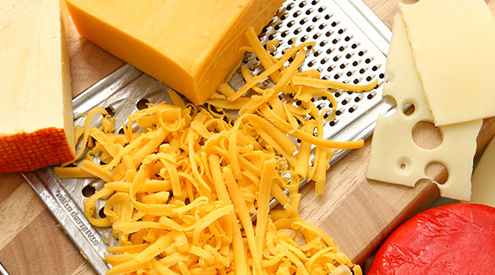As semiconductor manufacturing continues to improve, the industry is increasingly adopting 3D stacking techniques to enhance performance and density. These methods enable vertical integration of multiple chips, creating compact, powerful devices suitable for modern applications. Erik Hosler, a proponent of precision engineering in semiconductor manufacturing, recognizes the critical role of advanced techniques in minimizing yield loss during 3D stacking.
The process of stacking semiconductor dies introduces new challenges related to alignment accuracy, interconnect reliability and thermal management. Overcoming these challenges requires a strategic combination of innovative fabrication methods and rigorous quality control protocols.
The Need for Precision in 3D Stacking
Precision is paramount in 3D stacking due to the intricate nature of vertically integrated circuits. Even minor deviations during alignment can compromise the entire structure, leading to significant yield loss. As manufacturers push the limits of miniaturization, maintaining consistent precision across multiple layers becomes increasingly critical.
Accurate alignment during die placement is essential to prevent electrical mismatches and ensure optimal signal transmission. Techniques such as self-aligned bonding and automated optical inspection help detect and correct misalignment issues before final assembly. Incorporating these measures early in the production process significantly reduces the risk of yield loss. Furthermore, precision alignment helps maintain device efficiency and prolongs operational reliability, which are crucial in applications requiring long-term stability.
Advanced Techniques for Reducing Yield Loss
To minimize defects in 3D stacked devices, manufacturers are adopting advanced techniques designed to enhance precision throughout the assembly process. One approach involves using hybrid bonding, which combines copper-to-copper and oxide-to-oxide connections to improve interconnect stability. This method not only strengthens the physical bond but also enhances electrical performance by minimizing resistance at the interface.
Ensuring precision in these processes requires integrating advanced monitoring systems and maintaining stringent control over environmental factors. By proactively addressing potential sources of error, manufacturers can better maintain the consistency needed for reliable stacking.
One of the most promising approaches in this context is using ion implantation to enhance material properties and improve bonding efficiency. This method helps achieve stable and reliable interconnects, even as devices become more compact and complex.
Establishing standardized protocols for ion implantation in 3D stacking environments is vital. These protocols help streamline the integration of new techniques and maintain consistency across different manufacturing facilities. Furthermore, adopting the best practices for contamination control during bonding can significantly reduce defect rates.
In addition, manufacturers are increasingly exploring the role of plasma-based treatments in enhancing surface compatibility for bonding. Plasma cleaning and activation techniques can improve adhesion by removing contaminants and modifying surface energy, leading to more consistent and durable bonds.
Erik Hosler explains, “Accelerator technologies, particularly in ion implantation, are enabling manufacturers to push the limits of miniaturization while maintaining the integrity of semiconductor devices.” This perspective highlights how cutting-edge approaches in fabrication support the precision required for reliable 3D stacking.
Advanced metrology tools play a pivotal role in maintaining precision. These tools enable real-time monitoring of critical parameters, including alignment accuracy and bond strength. By detecting potential deviations early, manufacturers can implement corrective measures before defects propagate through the stack. Integrating these metrology techniques with automated systems ensures continuous quality assurance throughout production.
AI-Driven Quality Control
Implementing Artificial Intelligence (AI) in quality control processes further enhances precision in 3D stacking. Machine learning algorithms analyze vast amounts of production data to identify patterns associated with defects, allowing for predictive maintenance and real-time adjustments. This proactive approach helps reduce yield loss by continuously refining production parameters based on historical data.
AI-driven inspection systems can detect sub-micron defects that may elude traditional inspection methods. Integrating AI with advanced imaging techniques ensures that even the most subtle irregularities are addressed promptly, preserving the quality of the final product.
To maximize the impact of AI-driven quality control, manufacturers must invest in data infrastructure capable of processing and analyzing large datasets efficiently. By fostering collaboration between AI specialists and process engineers, companies can develop more targeted algorithms that address specific challenges inherent to 3D stacking.
Material Innovation for Precision
The choice of materials significantly impacts the precision of 3D stacking. Low-thermal-expansion substrates, for example, reduce the risk of warping during thermal cycling, maintaining alignment accuracy. Similarly, developing materials with enhanced adhesive properties ensures that layers remain securely bonded, even under operational stress.
Exploring new material compositions that minimize thermal expansion mismatches between layers is crucial for maintaining structural integrity. These innovations not only improve precision but also enhance the overall durability of 3D stacked devices. Research into novel composite materials that combine flexibility with thermal stability could further advance the robustness of future packaging solutions.
Another promising avenue is the integration of adaptive materials that respond to environmental changes. Such materials could adjust their properties in real-time, compensating for temperature variations or mechanical stresses, thereby preserving alignment and structural integrity.
The Future of Precision in 3D Stacking
Advancements in fabrication techniques, quality control and material science continue to shape the future of 3D semiconductor packaging. As the industry prioritizes precision, manufacturers are investing in automated systems and AI-driven solutions to streamline production and reduce yield loss.
Emerging research in self-healing materials could offer new ways to maintain precision over the lifespan of stacked devices. These materials automatically correct minor defects, helping to sustain performance under varying operational conditions.
By integrating these advanced techniques, the semiconductor sector can achieve more reliable and efficient 3D stacking processes. The continuous development of precision engineering will play a pivotal role in addressing the challenges of modern microelectronics and ensuring the successful adoption of next-generation technologies.
Innovation for Long-Term Success
Looking ahead, maintaining high precision in 3D stacking will remain a core focus for semiconductor manufacturers. By leveraging emerging technologies and fostering industry collaboration, manufacturers can continue to optimize processes, reduce yield loss and meet the demands of an increasingly data-driven world.
Through dedicated research and development efforts, the semiconductor industry will continue to unlock the potential of 3D stacking, setting new standards for performance, reliability and innovation. Enhanced precision techniques and innovative approaches to yield management will be central to ensuring that 3D stacking technology meets the demands of advanced applications, from consumer electronics to high-performance computing. As technology advances, the commitment to precision will shape the future of microelectronics, driving both innovation and sustainability.





